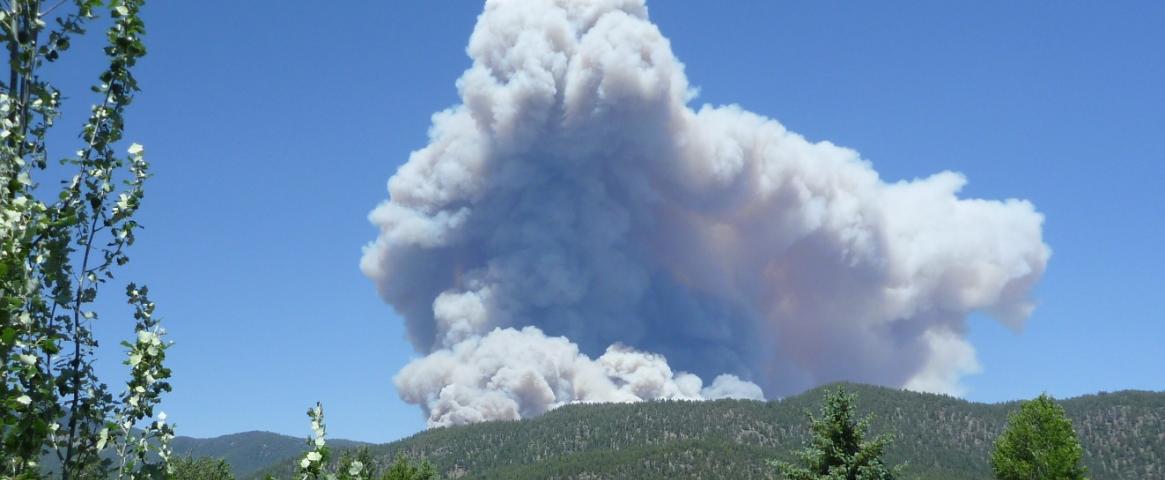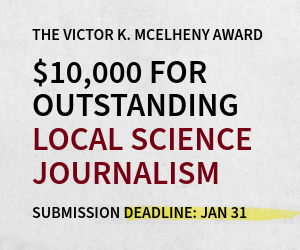This student story was published as part of the 2025 NASW Perlman Virtual Mentoring Program organized by the NASW Education Committee, providing science journalism experience for undergraduate and graduate students.
Story by Sophia Ramirez
Mentored and edited by Jenny Morber
Are trees really planted every time someone reposts a photo on their Instagram story? Definitely not. Plant-a-tree scams pop up online every year, sowing public distrust against the reforestation nonprofits and businesses that exist in the U.S.
Fortunately, real charities and businesses exist to plant trees. Tree planting projects pull in millions of dollars annually from Americans hoping to make a positive environmental change. However, the industry will have to overcome funding and supply chain gaps to keep up with the reforestation demands caused by climate change.
The most well known arm of the reforestation industry are the charities, who plant with donated funds. The Nature Conservancy, an environmental nonprofit, hosts the Plant a Billion Trees campaign with planting partners across the globe.
The Plant a Billion Trees campaign pulls in approximately $3 million and plants about five million trees annually. Planting is managed at the local level, to ensure the trees fit their environment.
“We're trying to plant climate adaptive species that are local to where they're being grown,” said Angela Napoletano, who manages the Plant a Billion Trees campaign. She explained that they also partner with local nurseries, which reduces carbon emission by cutting down on transportation.
The Plant a Billion Trees campaign can get a tree in the ground for about $2 on average, using money from donations. On the other side of their industry, some corporations make their money by planting trees for landowners.
For example, Mast Reforestation works with private landowners after they experience forest fires. Their business is part of the carbon economy, explained Lisa Gonzales-Kramer, a vice president at Mast Reforestation.
Forest fires release a fraction of the carbon stored inside trees, but a greater amount is left in the charred remains, explained Gonzales-Kramer. Mast Reforestation removes and buries the charred trees, so the sequestered carbon stays out of the atmosphere. Keeping carbon in the ground generates carbon credits, the token of the carbon economy.
“We're able to claim that credit that gives us funding that we return to do the work of the reforestation,” Gonzales-Kramer said.
Like the Nature Conservancy, they plant seedlings to match the native species and climate. This includes understanding how the climate has changed between the start of the original forest and today.
“We might take seed from a lower elevation that now is more appropriate for this elevation because it's hotter and drier now,” said Gonzales-Kramer.
Mast Reforestation and other private companies work with private landowners and also partner with government agencies. That is where the USDA Forest Service comes in.
“On lands managed by the USDA Forest Service (the National Forest system), wildfire is the leading driver of reforestation needs,” said Chris Dahl, an assistant program manager for reforestation at the Forest Service, in an email.
Dahl explained that the service monitors their sites after the first and third growing seasons. “We also implement stand improvement activities — like thinning — to strengthen forest resilience and reduce future wildfire risk,” he said in an email.
Climate change is driving the occurrence of severe wildfires, forcing evacuations across the U.S. However, the industry can not meet the demands posed by increasing wildfires, according to Joseph Fargione, science director for the North American region at the Nature Conservancy.
In 2024, he co-authored a paper which surveyed the reforestation industry, and found striking gaps in the supply chain and funding availability. Their research estimated that, since 2001, 3.8 million acres were not replanted after experiencing wildfires. They anticipate this gap to double or even triple by 2050.
“I think that the current political environment is not favorable towards climate action and that may be making some headwinds,” Fargione said.
The paper concluded that higher rates of forest fires, lower rates of tree planting, and lowered investment in seed collecting have impaired the industry’s ability to meet reforestation demands.
“Our biggest challenge is the cost of reforestation. That's the biggest challenge of reforestation anywhere,” said Gonzales-Kramer, who also worked on the paper.
For those who seek to contribute to reforestation efforts, “there's organizations like the Tree Trust that organize volunteer plantings,” Fargione said. “You can have a forest management plan, or you can look to participate in the carbon market.”
The carbon market has faced some criticisms that it greenwashes while not preventing carbon emissions. But there are still avenues for bringing money to the reforestation industry.
“Tree planting is a very easy and accessible way to support climate and there's a myriad of ways that people could do it,” said Napoletano.
Top image: Day one of the Schultz Fire, depicting smoke rising above evergreens at the top of a ridge, shot by D Huebner in 2010 from Cheshire, west Flagstaff, Ariz., U.S. Use of this image is governed by Creative Commons CC BY. Image credit: USDA Forest Service. 2007. Forest Service Research Image Library. Fort Collins, CO: Forest Service Research Data Archive. https://www.fs.usda.gov/rds/imagedb. Image link: https://www.fs.usda.gov/rds/imagedb/image/25585.
Sophia Ramirez studies journalism at Columbia University. She has a B.S. in biological sciences from Arizona State University. Her work is published in the Arizona Republic and the State Press, as well as videos produced for a local science non-profit. This summer she interned with Brookhaven National Lab in the Media and Communications Office. Her writing combines science research with human interest or politics stories. Dr. Jenny Morber is a veteran freelance science writer and journalist based in the Pacific Northwest, where she writes on science, health, and the environment, focused on solutions.The NASW Perlman Virtual Mentoring program is named for longtime science writer and past NASW President David Perlman. Dave, who died in 2020 at the age of 101 only three years after his retirement from the San Francisco Chronicle, was a mentor to countless members of the science writing community and always made time for kind and supportive words, especially for early career writers.
You can contact the NASW Education Committee at education@nasw.org. Thank you to the many NASW member volunteers who lead our #SciWriStudent programming year after year.
Founded in 1934 with a mission to fight for the free flow of science news, NASW is an organization of ~2,600 professional journalists, authors, editors, producers, public information officers, students and people who write and produce material intended to inform the public about science, health, engineering, and technology. To learn more, visit www.nasw.org.






